Why is 1 mg the go to prescription of finasteride when it’s only 2 procent points more effective than 0.2 mg? Finasteride/Dutasteride 6/24/2025
1 mg of finasteride is commonly prescribed because it is more effective for a larger number of people compared to lower doses, despite only slightly reducing serum DHT more than 0.2 mg. Serum DHT and scalp DHT are different, and 1 mg is believed to reduce scalp DHT more effectively, contributing to better hair growth results.
View this post in the Community →
Similar Community Posts Join
6 / 1000+ resultscommunity Ultimate DHT/finasteride microdosing graph to replace the commonly one referenced on forums
Hair loss treatments, specifically, discussing the effectiveness and side effects of finasteride, minoxidil, and RU58841 in various microdoses. It also includes an updated graph which provides information on how different doses affect DHT levels, scalp skin and serum androgen levels, as well as hair count.
community Bloodwork reports just came in
A 21-year-old male suffering from male pattern baldness is using topical finasteride and minoxidil, and oral minoxidil. His bloodwork shows normal DHT levels and slightly high testosterone, leading to discussions about the role of DHT sensitivity in hair loss, the potential impact of finasteride on his DHT levels, and the suggestion to proceed with oral finasteride due to his high testosterone.
community Hey guys I’m a Compounding Pharmacist specialized in Hair-loss who makes Topical Finasteride Foam +/- minoxidil
A compounding pharmacist offers affordable topical finasteride foam with Anagain and micro-dose finasteride capsules for hair loss. They provide telehealth services across Canada and private appointments for international patients.
community My DHT levels have increased after taking 0.25mg Fin for 47 days!
A user experienced increased hair shedding and unchanged DHT levels after taking 0.25mg of finasteride for 47 days, leading them to increase the dose to 0.5mg. Others discussed varying experiences with finasteride, minoxidil, and the importance of measuring scalp DHT.
community DHT is about to get smashed ….
The conversation discusses hair loss treatments like topical finasteride with minoxidil, oral dutasteride, and essential oils. Oral treatments like dutasteride and finasteride are seen as more effective, though some prefer topicals to avoid side effects.
community Why you may be taking Dutasteride wrong
Dutasteride is more effective than finasteride for hair loss, with optimal dosing at 0.5mg once or twice a week to minimize side effects. Topical application may further reduce side effects while effectively lowering scalp DHT.
Related Research
6 / 1000+ results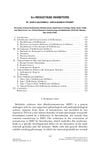
research 5α-Reductase Inhibitors: Progress and Therapeutic Potential
5α-reductase inhibitors help treat disorders caused by DHT and have potential for future therapies.
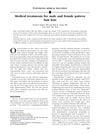
research Medical Treatments for Male and Female Pattern Hair Loss
Minoxidil and finasteride treat hair loss in men, while minoxidil treats hair loss in women.
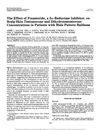
research The Effect of Finasteride, a 5 Alpha-Reductase Inhibitor, on Scalp Skin Testosterone and Dihydrotestosterone Concentrations in Patients with Male Pattern Baldness
Finasteride reduces scalp DHT levels, potentially treating male pattern baldness.
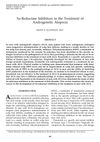
research 5α-Reductase Inhibitors in the Treatment of Androgenetic Alopecia
Finasteride improves hair growth in men with androgenetic alopecia.
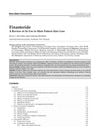
research Finasteride
Finasteride effectively treats baldness but may cause sexual side effects.
research Efficacy and Safety of Topical Finasteride Spray Solution for Male Androgenetic Alopecia: A Phase III, Randomized, Controlled Clinical Trial
Topical finasteride is an effective and safer treatment for male hair loss.